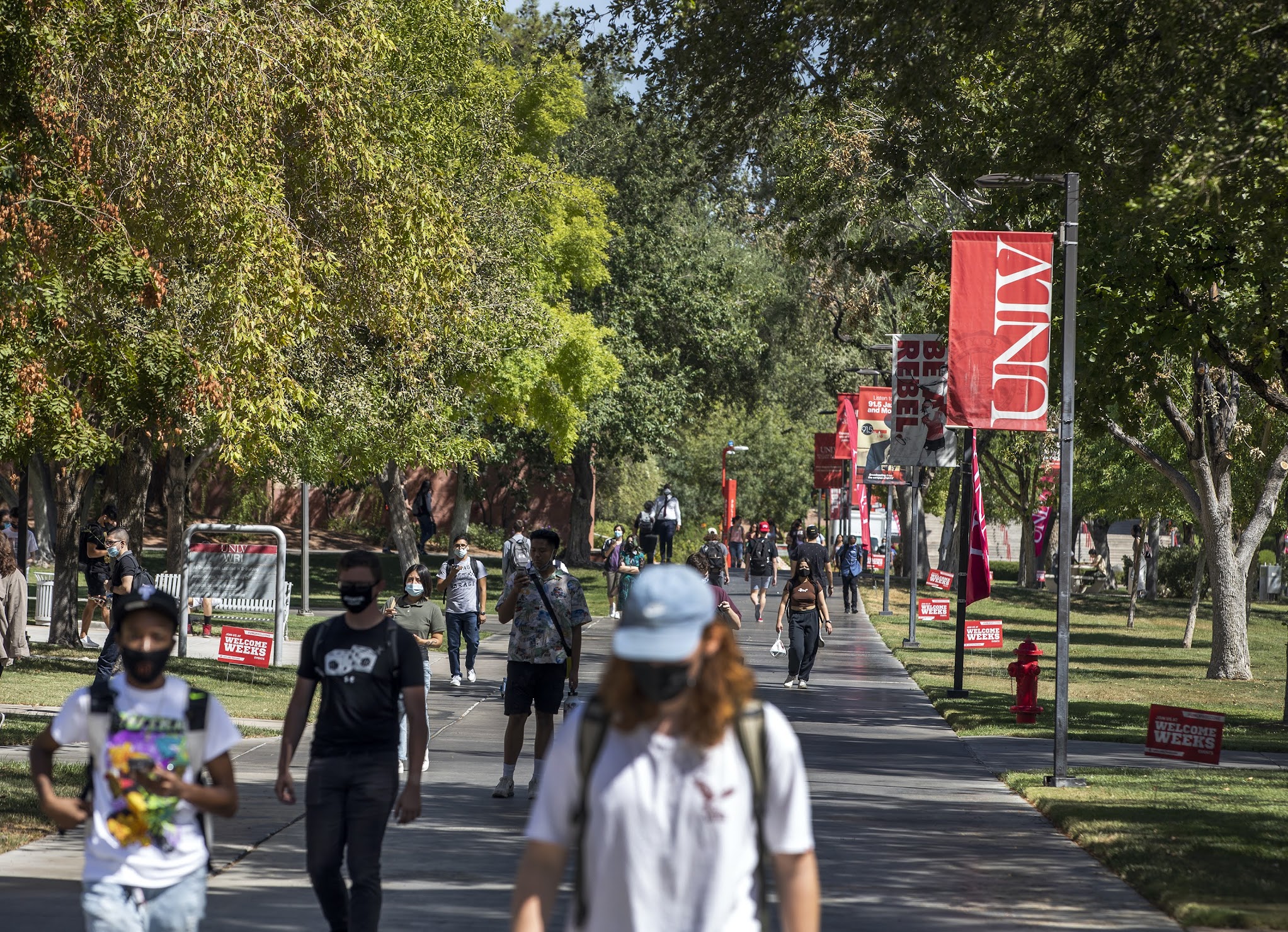Sen. Cortez Masto is right about Biden's student loan forgiveness plan

Earlier this week, in what was either an exercise in speaking truth to power or an exercise in a Democratic incumbent distancing herself from an unpopular Democratic president (use your own judgment), Sen. Catherine Cortez Masto (D-NV) openly criticized President Biden’s well-publicized plan to not only forgive millions of Americans from five figures of student loan debt, but to also drastically reduce the minimum payments required on outstanding balances.
She did the right thing. It’s a bad plan.
Before we discuss where I stand on the issue and why, let’s get some obligatory biographical information out of the way: If Biden’s plan actually takes effect and isn’t stopped in court, I will personally benefit from the plan. I currently owe roughly $15,000 in student loan debt, out of roughly $40,000 I originally borrowed in college. Since I was a Pell Grant recipient in college, Biden’s plan will eliminate this student loan debt. That said, at this stage in my life and career, the monthly payment on my student loans is not particularly onerous.
I don’t, in short, require the government’s assistance to pay my student loans off — but don’t think for a second that I plan on turning it down.
The reason I bring this up is because I think it’s important to stress that I’m not objecting to Biden’s student loan forgiveness plan because I paid my student loan debt in full and I think it’s unfair that someone else won’t have to. Adopting that attitude about student loans always left me a little confused, anyway. Student loans, after all, wouldn’t meaningfully exist without the government subsidizing and legally privileging them. It took making student loans nearly impossible to discharge in bankruptcy and the government simultaneously guaranteeing repayment to lenders when (not if, when) students default for private lenders to underwrite any of the loans under the Federal Family Education Loan Program I originally borrowed against. After the Great Recession, however, even those guarantees weren’t enough — now students just borrow directly from the Department of Education through the Federal Direct Student Loan Program instead.
Even if student loans were purely private loans (which, again, they’re not), loans frequently aren’t repaid. That’s why banks charge interest on loans in the first place — to cover the potential risk of default. It’s also why bankruptcy law exists — a subject our last president was well acquainted with when his businesses weren’t just outright stiffing small businesses, including a Las Vegas drapery factory. Like every other law, including those regulating student loans, bankruptcy law doesn’t exist as a reflection of the state of nature or an expression of moral will — it exists because the government, and those it purports to govern, find its legal existence more beneficial than its absence.
The problem with Biden’s program, then, isn’t that loans won’t be repaid. By legal and statutory design, many loans aren’t and never will be. Student loans are not unique in that regard.
Then there’s the matter of what we borrow and repay our debts with. I’m currently writing this column in a city named after one of Nevada’s four former Silver Party governors (John Sparks, to be more specific). The Silver Party’s primary platform plank, as the name might suggest, involved allowing the United States to back dollars with silver, not just the gold dollars were backed with at the time. Though the precise reasoning behind this particular plank is a little inscrutable to modern audiences — the Silver Party’s popularity in Nevada frankly had far more to do with Nevada being home to both the Comstock Lode and Tonopah, two of the largest discoveries of silver ore in the United States, than anything to do with the merits of bimetallism — the idea was to intentionally adopt an inflationary monetary policy so that a dollar borrowed at the beginning of planting season would, at a minimum, not be worth more when that dollar was repaid after the harvest. This is why William Jennings Bryan’s infamous “Cross of Gold” speech was such a hit when he delivered it to a bunch of farmers in Chicago in 1896 — he was promising more wealth in their pockets after they paid back the money they borrowed to buy seed and fertilizer.
Using the political process to identify which debts are to be repaid and under what conditions is nothing new. Doing so is at least as old as our state.
I’m addressing all of this to drive home the point that the faults in Biden’s student loan forgiveness program are neither moral nor historical — they’re practical. It’s just not a well thought out plan.
The first problem with the plan is that the University of Nevada, Reno already has my money. Forgiving my student loans won’t encourage any Nevada university, much less the Legislature, to reduce end user costs for students — costs which, to be clear, have been rising at nearly double the rate of inflation, as measured through the Consumer Price Index, for decades:
Sources: NSHE Institutional Research Office, U.S. Bureau of Labor Statistics
A much more serious problem, however, lies in the part of the program I admittedly don’t directly benefit from — the Income-Driven Repayment (IDR) system.
The idea behind IDR is to ensure that students who don’t benefit enough from college to easily pay back their student loans aren’t saddled with onerous loan repayments and can get their loans discharged automatically after a certain number of years. This goal, as far as it goes, is fairly laudable — students get educated, schools get paid, and loans that realistically can’t get repaid reflect reality on the government’s books. To achieve this, the government calculates the maximum realistic repayment rate a student can be obligated to pay back.
Biden’s plan cuts the expected repayment rate to less than half of what it was previously (it reduces IDR payments from 10 percent of a calculated portion of a debtor’s income to 5 percent of a smaller portion), stops accruing interest on IDR-enrolled loans, and further reduces the repayment rate from 20 years to 10 years for original loan balances below $12,000.
The trouble with the expansion of this program is, as Matt Bruenig highlights, law schools have found a loophole (as lawyers, both current and prospective, are wont to do): They can simply raise tuition high enough to cover their students’ IDR payments, then make those payments on each student’s behalf through a Loan Repayment Assistance Program. The end result, from the student’s standpoint, is free tuition and room and board since, whether they borrow (or “borrow”) $10,000 or $100,000, they never personally lose a cent — the loan money goes to the school, the school sends a small portion of that money back to the government, and the only pain the student experiences is living with having an arbitrary amount of student loan debt on their credit report for a couple of decades until Uncle Sam forgives it.
As Bruenig points out, now that Biden’s program makes the IDR even more generous than it was previously, this loophole is likely to be used outside of law schools:
At some point, it seems like expensive private universities will realize that providing tens of thousands of dollars of need-based discounts to certain borrowers who are likely to wind up on IDR does not make sense and that they should instead charge the maximum amount a student can cover through federal loans. As the law schools show, the surplus generated by that scheme could even be shared a bit with the students via an LRAP.
Even certain public universities may end up reconsidering the wisdom of state-funded tuition subsidies. Tuition subsidies that lower the cost of attendance for public university students that wind up on IDR don’t actually benefit the student. Instead, they are just indirect transfers of money from state governments to the federal government.
About all Biden’s plan does is subsidize demand. That’s fine as far as it goes, but subsidizing demand will only make higher education more affordable to those being subsidized. Everyone responsible for paying for that subsidy, meanwhile, will take it on the chin while providers of higher education pocket the difference.
If we actually want to rein in higher education costs, we need to be honest with ourselves about what most students are trying to do when they enroll into college. For the most part, they’re just trying to receive the training and credentials they need to succeed in the workplace. Trouble is, most workplaces don’t train employees up anymore and, as the Mercatus Center points out, many of Nevada’s occupations statutorily require prospective employees to undergo expensive education and exams, as well as pay steep license fees, before they can start to work in their chosen profession. So, depending on the student’s desired vocation, they either join a union apprenticeship or enroll in postsecondary education, then pay whatever licensing fees they need to pay so they can hopefully make more money.
A good first step towards making higher education more affordable would be, then, to make it less necessary. Limit state-required occupational licensing solely to those occupations which directly threaten public health or safety when performed incorrectly — then ensure education, exam, and fee requirements cover just enough to insure against those risks. Get students into on-the-job training programs, either through union apprenticeships or even potentially government-subsidized workplace training programs (the government’s already paying for workplace education — why should they only pay colleges and universities?), where students can enjoy immediate boosts to their incomes and job proficiencies.
Colleges and universities are important institutions of higher learning. I’m glad I went to one and I hope more Nevadans have the chance to enjoy the same opportunity I enjoyed. They are not, however, the only institutions capable of providing workplace training — and we can’t afford to refuse to compete against them for much longer.
David Colborne ran for office twice and served on the executive committees for his state and county Libertarian Party chapters. He is now an IT manager, a registered nonpartisan voter, the father of two sons, and a weekly opinion columnist for The Nevada Independent. You can follow him on Twitter @DavidColborne or email him at [email protected].
